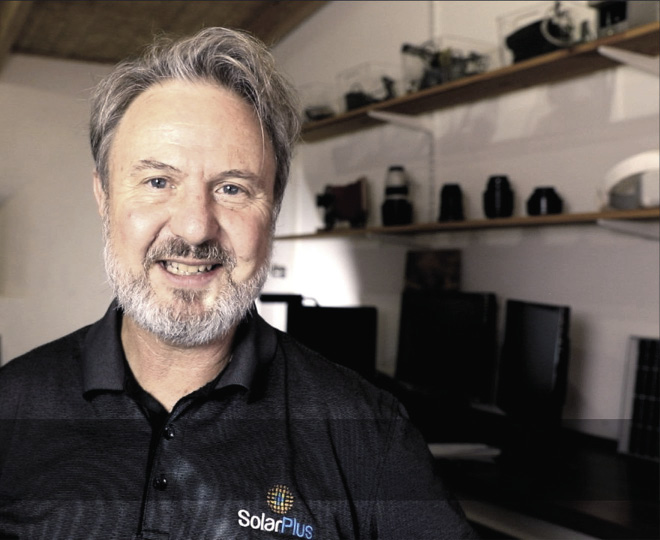How would you describe the rooftop market in Australia over the past year or so? It seems installation rates are at record highs.
Over the past few years, Australia has experienced high penetration of rooftop solar per capita. Small scale rooftop solar accelerated to 2.13 GW capacity in 2019. Combined total solar capacity, for both small scale and large scale projects, reached 3.3 GW in 2019. From 2017 until 2019, we have seen the growth rate for rooftop solar installations double.
I understand that array sizes and capacities are increasing in Australia. What are the sizes of residential systems being installed in 2020?
In Australia, most growth has been witnessed in a fringe of grid and small commercial systems. In 2019, the average PV system size was an astounding 7.6 kW. A similar trajectory can be forecasted for 2020. A system can be bigger than the needs of the household as per the Federal Government rebate based on PV capacity. Bigger systems offer faster payback periods and higher consumption of renewables. Australian roofs also have large surface areas and are not space constrained.
The residential market is established and mature in Australia. On the commercial and industrial (C&I) front it has taken a little longer to build momentum. What kind of development is occurring there?
For C&I, that can be attributed to low payback and lack of awareness opportunities. Large-scale generation certificates are generated after energy is produced and meter readings have to be submitted. With strong market for PPAs, the cost decreased from $80/certificate to $18/certificate. Now in 2020, the Large-scale Renewable Energy Scheme targets have been met and there is poor demand for these certificates. C&I systems are playing catchup to rooftop solar, but its trajectory is much faster.
For installation companies, it is quite a big step to move from smaller residential arrays to larger C&I systems. What are the challenges there?
Capacity, financial resources, connection agreements, network protection, and OHS (Occupational Health and Safety Act) issues such as heat, and physical access to rooftops for installers.
There can be technical challenges with larger C&I installations. How important is selecting the right inverters for the job?
Technical challenges, legal matters, poor contracts, poor quality equipment, and product failures. For example, while in-service, installers are liable to cater for expensive replacement of failed equipment. Having the right inverters for the job is critical, especially in quality and performance. For PPAs, efficiency of the inverter matters, even by a small margin.
Australia is considered one of the leading global markets for residential battery storage. I understand something approaching 300 MWh of residential storage systems were installed in Australia in 2019. What do you say is behind the decision for a homeowner to install a battery with their PV system?
For storage in Australia, no mandatory registration was required until the Distributed Energy Resources register was initiated by AEMO this year, in comparison to countries like the United States, where a permit needs to be issued, making tracking of battery storage installations easier. Australians are early adopters of technology and there is major interest in energy storage. It is a good place to learn and there are state-level government incentives for support such as in South Australia, Victoria, and New South Wales.
A homeowner may install battery storage for economic reasons, energy independence, or the need for backup power. Also, people are now choosing to stay in the same house longer, say roughly 10 years – which also coincides with the payback period of batteries. Batteries provide a strong backup, especially in bushfire and storm blackout situations.
How important is the provision of backup power for Australian households if they do decide to purchase a solar + storage system?
Very important, as it offers independence and security.
Even though prices are coming down, residential storage systems are still not cheap. What can homeowners do if they are installing rooftop PV today but may want to add storage at a later date?
Look for solar rebates, which is an upfront discount. Rebates vary with states also. Australia is at a good place when it comes to battery and inverter pricing, when compared to international markets such as the U.S.
Growatt’s new XH inverter series is ‘storage ready’, how well does this cater to this situation?
The Growatt XH hybrid inverter can be installed as a pure solar only grid-connected inverter but has the ability to have energy storage added later. “Storage ready” should be on the minds of all customers when purchasing a solar inverter. Growatt as a mature manufacturer of inverters has a strong relationship with the Australian market and from my experience has good local and international support for their products.
Indeed, way back in 2011, the company had something like 23% residential market share in Australia. How would you say Growatt is perceived by installers in Australia?
Growatt is a mature company as it has been around for a decade. Globally, Germany was an early leader. But China is the leader now as it has narrowed down the market, and it is growing as the dominant supplier with high quality products which are reliable and affordable.
How important is local service in Australia? And how well do you think the Growatt team meets this need?
Very important, as there needs to be no delays in replacements, and supply chains must be efficient. Installers are under pressure. Sometimes they’re unfamiliar with new products and with Growatt’s new system, installers can video call while on-site and receive immediate local assistance. Support is also available while setting up software and metering, which is commissioned through the app, even when there isn’t internet access. My experience with Growatt has been exemplary.
This content is protected by copyright and may not be reused. If you want to cooperate with us and would like to reuse some of our content, please contact: editors@pv-magazine.com.
